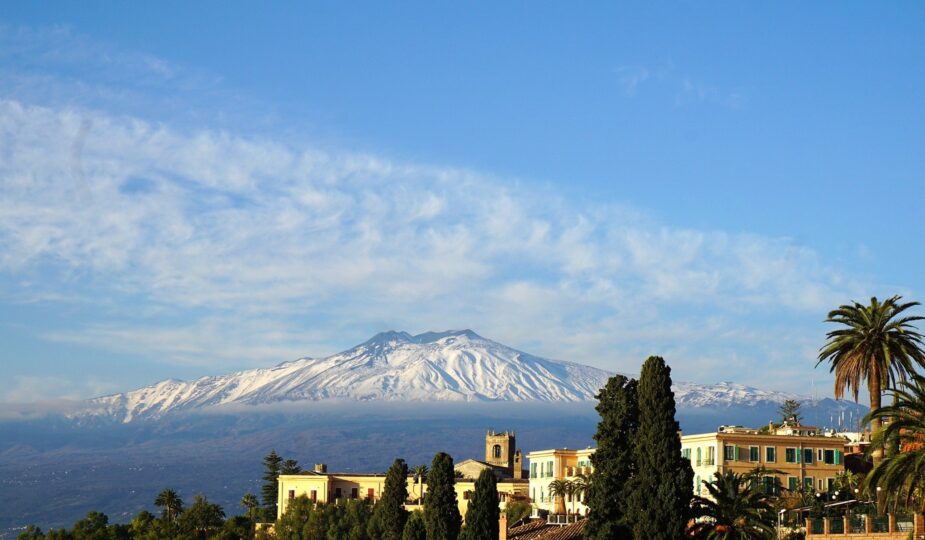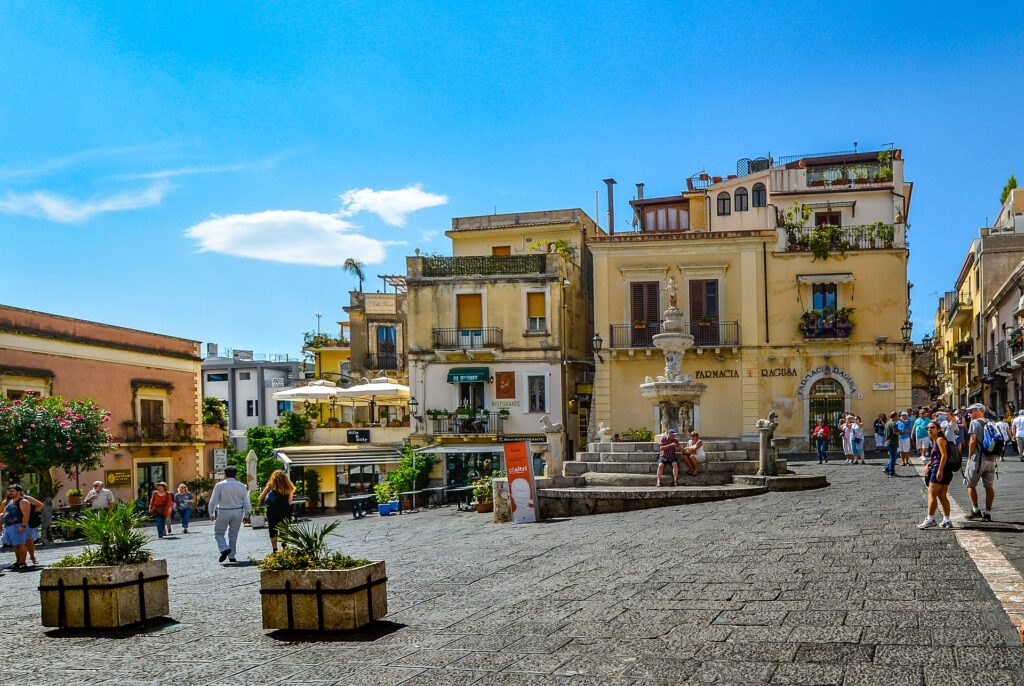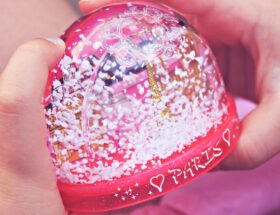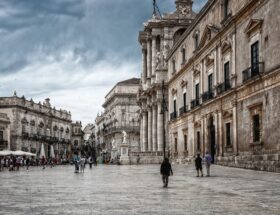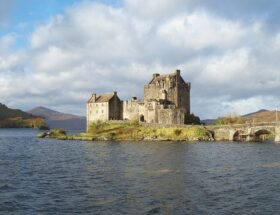If you are contemplating planning a trip to Sicily and are unsure if there is anything for kids to do then don’t worry as Sicily is an incredibly diverse island with lots to do for many age groups.
In the Italian culture family plays a very important part in an Italians day-to-day life and so no matter where you go in Sicily younger members of the family will generally be included in everything. So don’t worry there is plenty to do in Sicily with kids!
Sicily has a population of 5 million people and its about 900 miles around the whole island, so its not that small (about the same size as Massachusetts). So when looking at what to do in Sicily for kids and the family in general we should probably break the trip or vacation down to a few distinct locations.
If you are looking to cover the whole island then you probably need about 14 days to cover each main city or town adequately. You will no doubt fly into Palermo or Catania. Presuming that you arrive in Palermo we would suggest that your itinerary looks as follows:
- Palermo – 3 days (allowing you to visit Trapani and Marsala)
- Agrigento – 2 days
- Syracuse – 3 days (giving you the opportunity to visit Ragusa, Modica and Noto (one of the famous Baroque villages)
- Taormina – 4-5 days (allowing you to explore Mount Etna)
- Catania – 1 day
Looking at each of these cities in turn for things for kids to do in Sicily our favorites or recommendations would be as follows:
Palermo
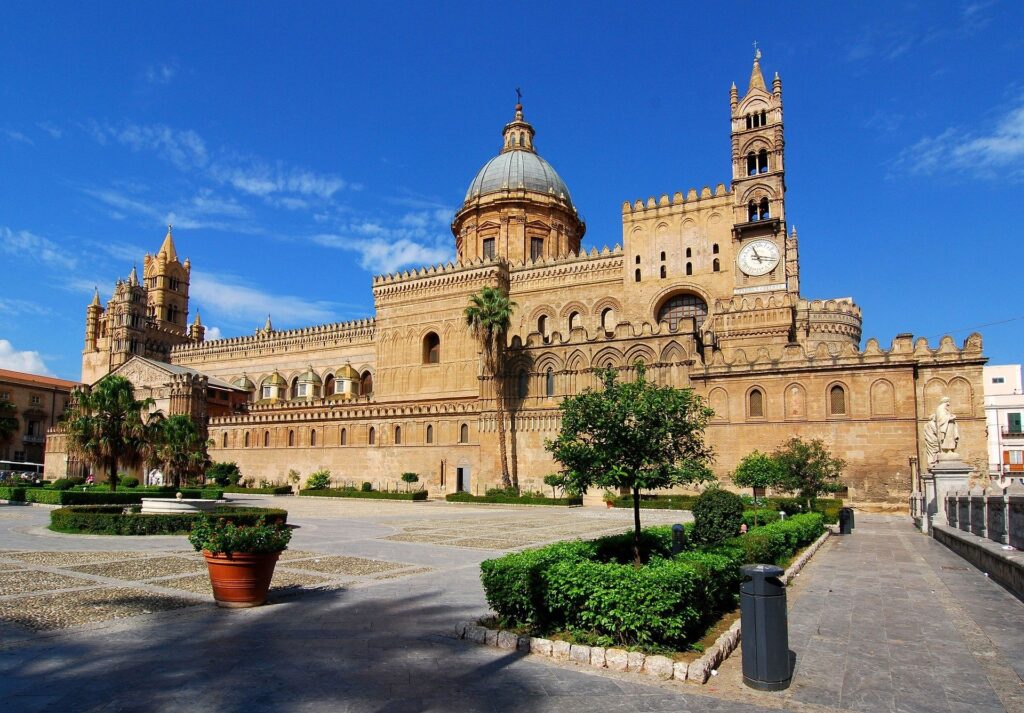
Palermo is not the best of cities for juniors. Streets are narrow and uneven and so are not best suited for strollers, a baby carrier might be a better option. Some of the best sites are outside of the city such as the Cattedrale or Duomo di Monreale (a Norman cathedral constructed in 1174 with mosaics on both sides depicting stories from both the Old and New Testaments of the Bible). Within the city itself you shouldn’t miss:
Catacombe dei Cappucini – The Catacombs of the Capuchins is an attraction that is admittedly not for everyone but perfect for teenagers! Housing the remains of more than 8,000 mummified human remains, the structure was originally built as a regular cemetery for deceased Capuchin friars belonging to the Church of Santa Maria della Pace.
Palazzo dei Normanni– The Norman Palace is one of two palaces and nine civil and religious structures in Palermo. The palace’s name translates into English as “Palace of the Normans”. Currently the seat of the regional government of Sicily, the palace has served as a government building for centuries.The apartments are an especially popular attraction among tourists.
Cattedrale di Palermo – Palermo Cathedral is one of the most notable examples of Arab-Norman architecture in Sicily. The Palermo cathedral features a remarkable marble shell that houses an array of geometric patterns. All throughout the interior, ziggurat crenellations, maiolica cupolas, and blind arches present a mesmerizing display of medieval architecture that tourists and historians from all over the world marvel at when they come visit.
Teatro Massimo is a 1,300-seat opera house known for its Neo-classical architectural design and its excellent acoustic qualities. Although the Greek Sicilian design of the exterior is strictly in the neoclassical vein, the interior of the building bears a noticeable art-nouveau appearance.
Piazza Pretoria, also known as square of Shame (due to the 16 nude statues), is just a few meters from the Quattro Canti, the exact center of the historic city of Palermo. The fountain initially intended for the Palace of San Clemente in Florence.
Quattro Canti or Four Corners, is a Palermo intersection that marks the city’s historical district. The crossroads is situated in the area that has traditionally been the city’s business and cultural center. Those who wish to see as much of Palermo as possible will find Quattro Canti to be an ideal starting point. This is because most sites of historical and cultural importance are located within a few minutes’ walk away.
Teens and tweens should find intriguing the mosaics of Capella Palatina and shouldn’t miss the opportunity to walk across the roof of the Cattedrale di Palermo andConvento di Santa Caterina d’Alessandria (for teenagers who love pasticceria (pastries) there is a great bakery inside.
Other great options for teenagers would be to explore the food markets of Mercato del Capo and Mercato di Ballaro’. We highly recommend one of the street food tours that make their way through these markets tasting some of Sicily’s delicacies and some other peculiar offerings unique to this area!
For younger kids we highly recommend a trip to the Museo Internazionale delle Marionette, the puppet show theatre Mimmo Cuticchio and if you are looking for an educational, leisurely walk then a trip to Palermo’s Botanical Gardens is worthwhile. Lastly, a trip to the Bioparco at Carini is worth a visit – a dinosaur park, playground and zoo, complete with a bird garden, reptile house, zebras, camels and lots more
Agrigento
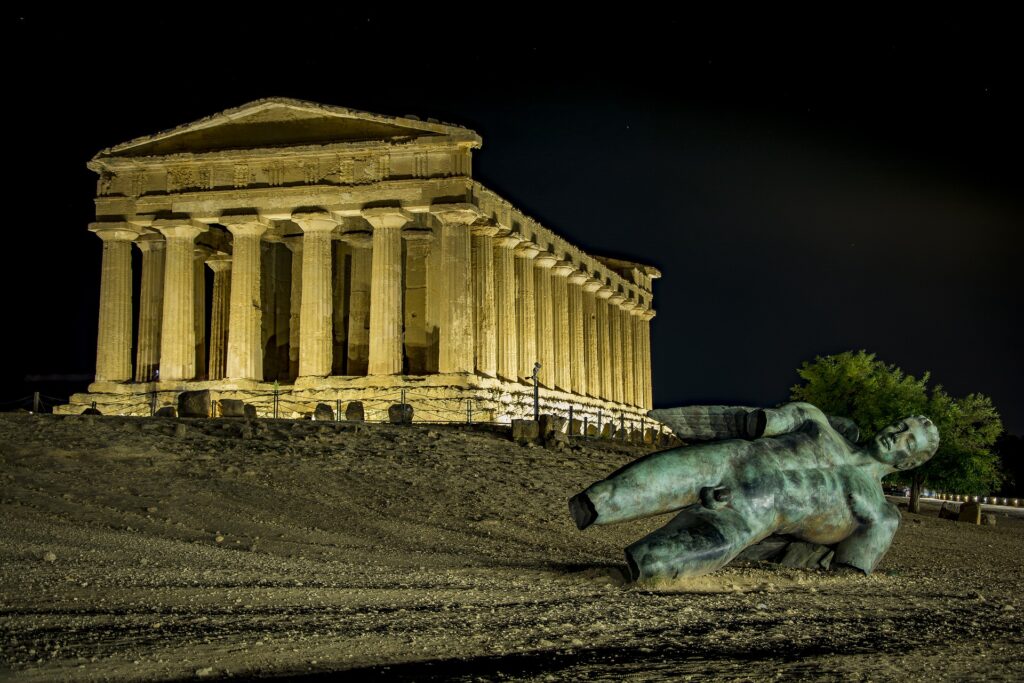
On the southern coast of Sicily you will find Agrigento which is home to the Valley of the Temples, one of the most important archaeological sites in the world with seven Greek temples surrounded by centuries-old olive trees and almond trees. It recommended to take and have a picnic lunch at the Kolymbetra Garden inside the Valley of the Temples, that was once an old Greek water reservoir.
Scala dei Turchi– just to the west of Agrigento (about 20 minutes by car) you will find one of the most amazing beach sites in Sicily, literally “Turkish steps” in English. A dazzling white rock formation, rising from the clear blue sea like giant steps. It lies between two sandy beaches, and is accessed through a limestone rock formation in the shape of a staircase, hence the name.
Syracuse
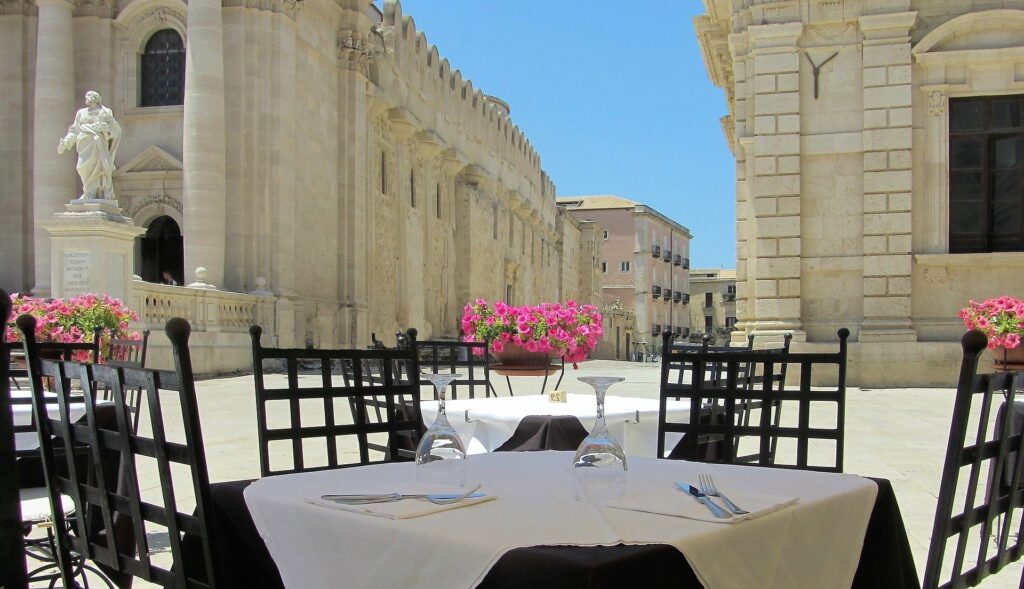
On the south eastern corner of Sicily you will find Syracuse well known for its ancient ruins. The city is composed of both the island of Ortigia (Ortygia) and the mainland section. In its heyday this was the largest city in the ancient world, even bigger than Athens and Corinth.
The central Archaeological Park Neapolis comprises the Roman Amphitheater, the Teatro Greco and the Orecchio di Dionisio (the Ear of Dionysius), a limestone cave shaped like a human ear.
Other than the Archaeological Park you should visit the following:
Ortigia Market – there is such an explosion of scents, colors and fantastic flavors of Sicily. Every kind of spice, pepper, cake, and seafood from this areas can be found here.
The Puppet Museum – This was the best form of entertainment on the island until the arrival of the television. It consists of marionette theatrical representations of medieval tales about the clashes between Normans and Moors.
The Cathedral of Syracuse and the Piazza Duomo – it is situated on what is often cited as one of the most beautiful piazzas (squares) in Italy., it is surrounded by baroque palaces. The architecture is mixed and was once a pagan temple and at the same time a Christian church. It stands on the ruins of a temple dedicated to Athen.
Museo Archeologico Regionale Paolo Orsi – one of the most important and prestigious museums of archaeology in Europe. On display, there are pieces dating from the prehistory to the Greek-Roman period, coming from excavations in the city and other places of Sicily.
The Temple of Apollo – magnificence of these Greek ruins can be immediately noticed when arriving to the small island of Ortygia. In the evening, thanks to the lights, you can enjoy a beautiful spectacle.
Fonte Aretusa (Fountain of Arethusa) – the fresh water fountain is the place where the nymph Arethusa, the patron figure of ancient Syracuse, returned to earth’s surface after escaping from her undersea home in Arcadia.
Piazza Archimede – dedicated to the famous mathematician and physicist.
Castello Maniace – is situated at the far point of the Ortigia island promontory, where it was constructed between 1232 and 1240 by the Emperor Frederick II.
In Ortigia what might interest the family is the the Museo Leonardo Da Vinci e Archimede Siracusa. This museum is a fantastic dedication to both of these great minds with replicas of their inventions throughout the museum – a lot of these are interactive for the kids.
Another options is the Museo del Papiro (papyrus). This museum details the history and use of papyrus – not just for paper, but also used for tools and boats.
Taormina
Taormina is a hilltop town on the north eastern coast of Sicily and you can see Mount Etna from the town center. The town is best known for Teatro Antico di Taormina, an ancient Greco-Roman theater that is still used today. Near the theater, cliffs drop to the sea forming coves with sandy beaches and here you will find a narrow stretch of sand which connects to Isola Bella, a tiny island and nature reserve. Taormina is quite unique in that you can chose to have a town or a beach vacation depending on which hotel you choose to stay in and both are connected by a cable car (funicular).
Ancient theatre of Taormina (Teatro antico di Taormina) – the main monument of the city, not only for its artistic value but also for the vista. You can see Mount Etna, the town and the Sicilian coast from within the theater.
Duomo di San Nicola – built in the thirteenth century, this cathedral is square and severe of appearance which is reminiscent of many Norman cathedrals.
Isola Bella – was bought in 1890 by Miss Florence Trevelyan who enhanced it by building a house and cultivating rare plants. In the 50s it became a residential hotel of the elite. It is still connected to the mainland by a thin strip of pebbly beach which often remains submerged in the center.
Giovanni Colonna Park – this Public Garden of Taormina once belonged to the English noblewoman Lady Florence Trevelyan andwas built in the late nineteenth century on the model of English gardens.
A couple of other things to do with kids in Taormina are:
*Take a cable car ride down to the beach and visit Isola Bella
*Take a passeggiata along Corso Umberto – shops, cafes, bars and gelato.
*Visit Etnavventura adventure playground on the way to Mount Etna
*Or on its own, take a trip to Mount Etna
*On a hot day head out to Etna Land – theme park, water park and dinosaur park all rolled into one.
Catania
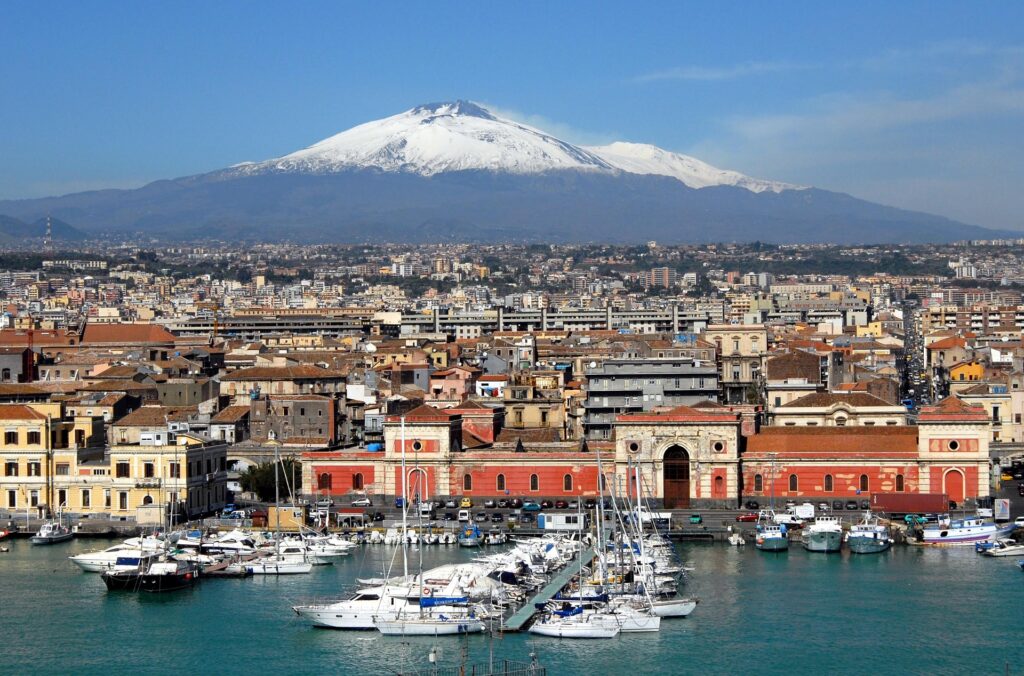
Catania is on the east coast of Sicily. It is a port city and sits at the foot of Mount Etna. Must sees in this city include Piazza del Duomo, featuring the whimsical Fontana dell’Elefante statue and richly decorated Catania Cathedral. The La Pescheria weekday fish market is a rowdy spectacle surrounded by seafood restaurants that is well worth a visit.
Castello Ursino – is a magnificent 13th century castle that includes an impressive collection of artwork and artifacts. A guided tour is the best way to experience the best of the castle.
Piazza del Duomo & Fontana dell’Elefante – The Sicilian Baroque masterpiece was rebuilt on the site of the older medieval square in 1700. It is made from lava and limestone. The square is reminiscent of the city’s rich heritage and is a meeting point for locals and tourists alike.
Teatro Massimo Bellini – draws millions of tourists every year. It is a true opera house located and is the stage for some enthralling live performing arts.
Giardino Bellini – is the oldest urban park of Catania. It occupies 70.942 m² and traces back to the eighteenth century. Entry is free and it is ideal for picnics.
Museo del Giocattolo – is the only dolls’ museum in the city. Established in 1998, it portrays different kinds of toys used in different periods of time. It consists of toys made of wood, tin and many other materials. Trains, dolls and small vintage toy cars constitute most of the museum.
In addition to the main centres it is worth noting that there is plenty to do and see in the Sicilian countryside. Sicily is a land full of castles, picturesque Baroque towns, Greek and Roman temples and ruins, vineyards, salt pans and beaches – so never a dull moment!
Sicily’s diversity means that you can easily combine a packed sightseeing itinerary with a stack of leisure time. Combining both is easily done on any day, for example right after an educational tour of Mount Etna you can come down the mountain and enjoy an incredible lunch in one of the many vineyards that lie on the lava plain, with incredible views of the volcano; or after touring Modica spend some time making and tasting chocolate or experience wine making at Marsala.
If you need some assistance in Sicily and want us to help you plan something extraordinary then please drop us a line here.
Please leave a comment below if you want to share anything or ask us a question.
